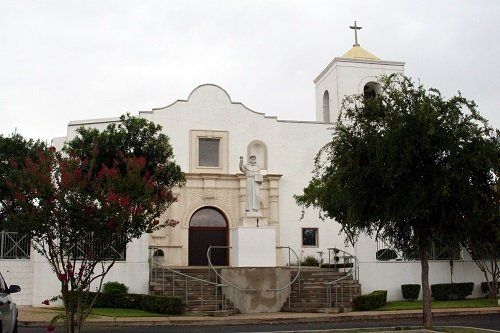Humble Beginnings
St. Anthony de Padua Parish was established by the faith of the Shrine Workers of St. Anthony. Located in Cementville, the missionary church was named in honor of the patron of San Antonio.
In 1925, Fr. Peter Baque wanted to form a congregation committed to serving the community. A small chapel was built in 1927 by the pecan shellers, Cementville workers, and others.
During the next decade, the congregation grew in number and spirituality. Pilgrims came to worship at the site, a school was opened, and the Missionary Servants of St. Anthony were founded to teach and serve the community. Within the depths of the congregation one charism remained paramount: to help all people in need in the area.
Fr. Baque wanted to eventually build a large shrine, which would be a replica of the Alamo, San Antonio’s first church. In 1957, the current church building, resembling the Alamo, was erected. Catholics, Protestants, and Jewish communities helped raise funds for this vibrant community and their new church. St. Anthony’s became a multi-cultural community gathered from various economic classes celebrating its rich history and cultural diversity.



